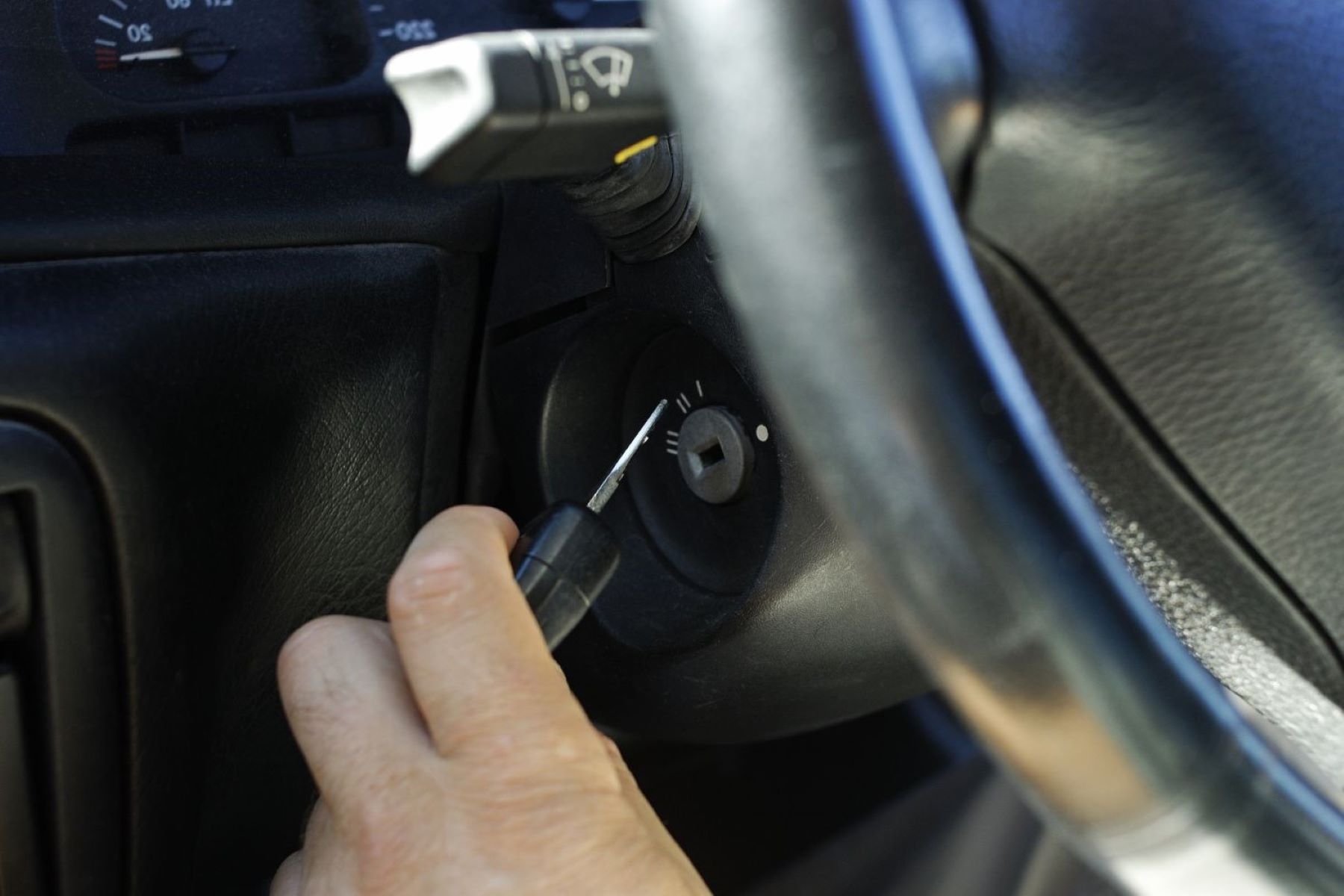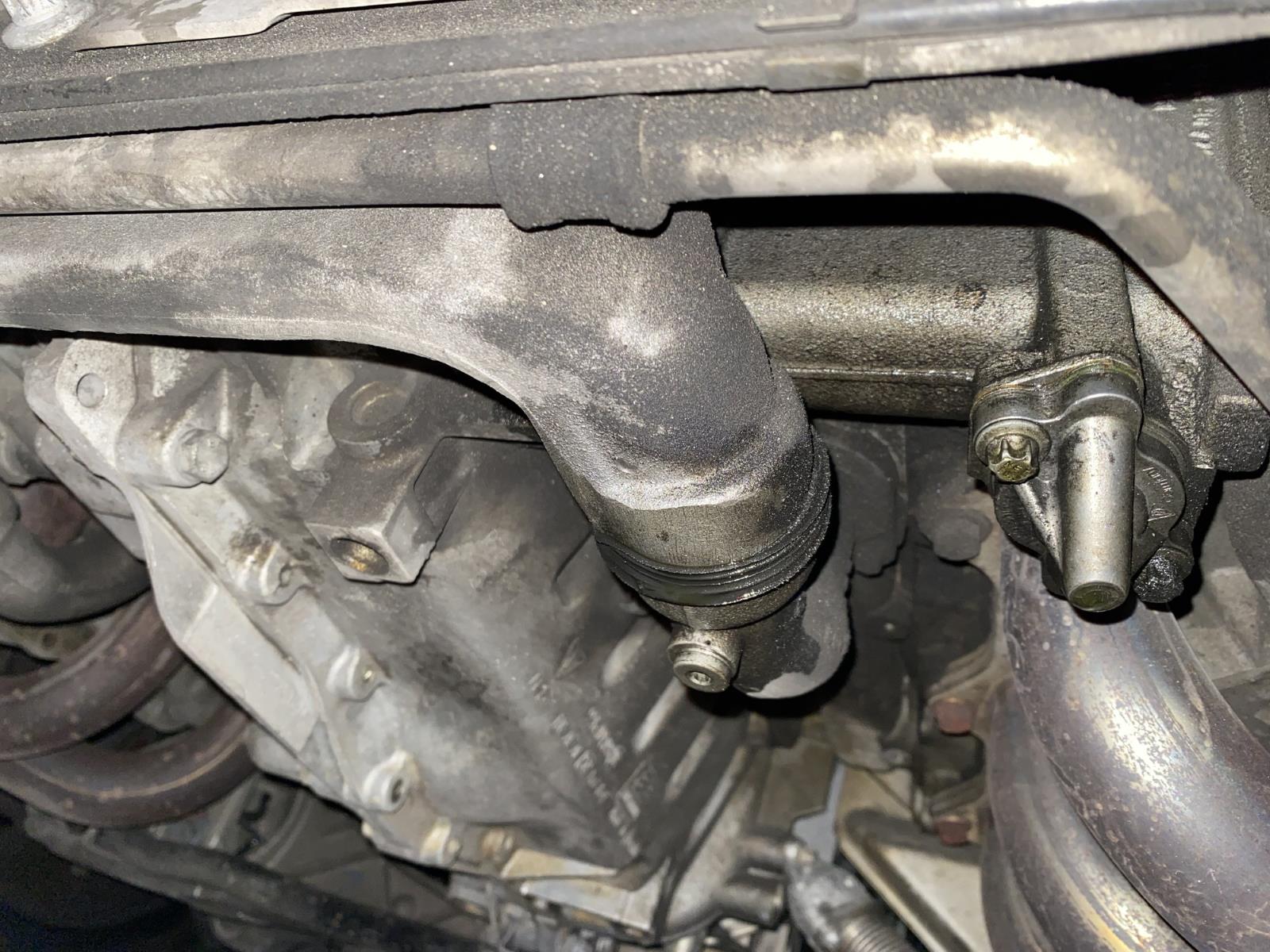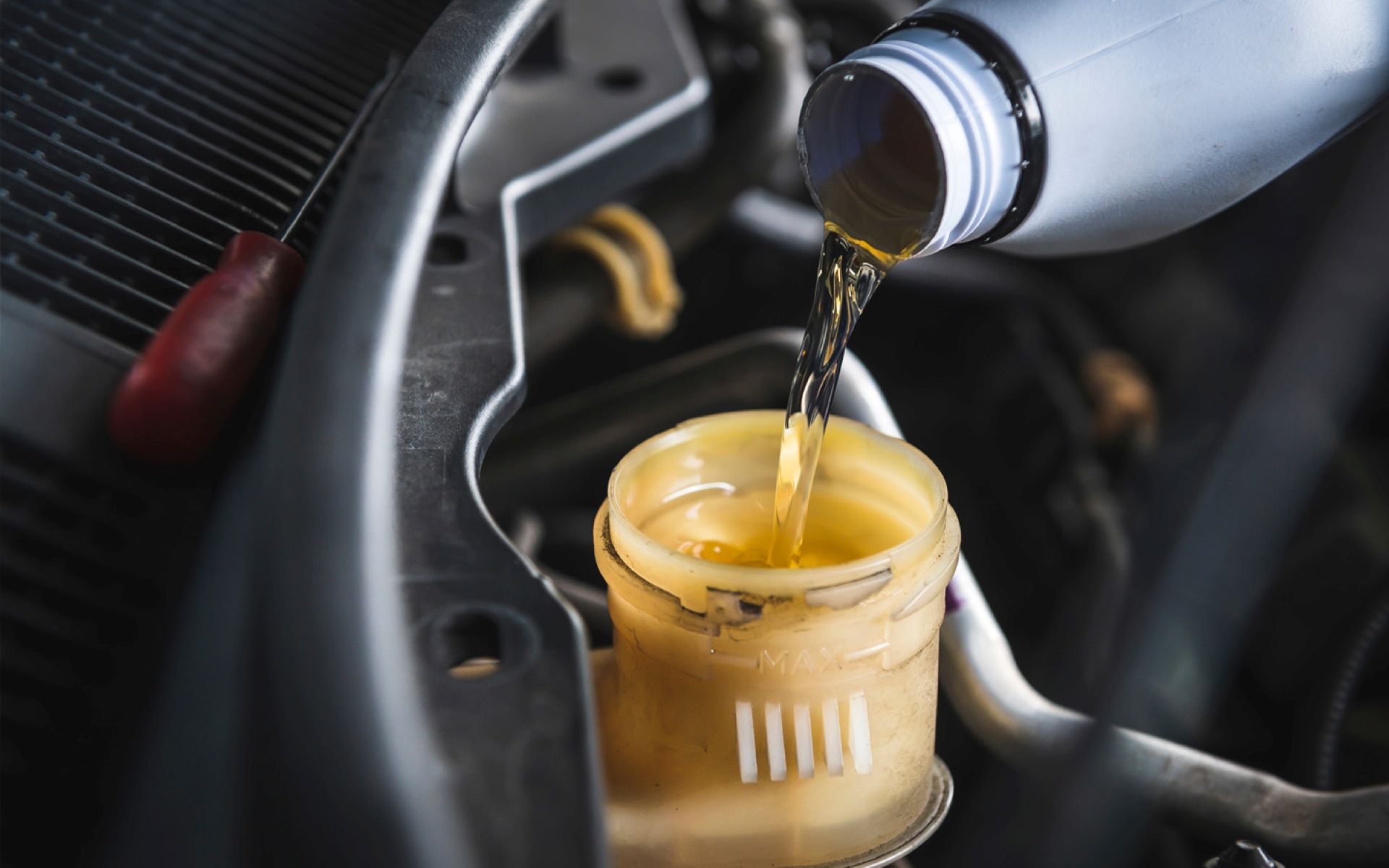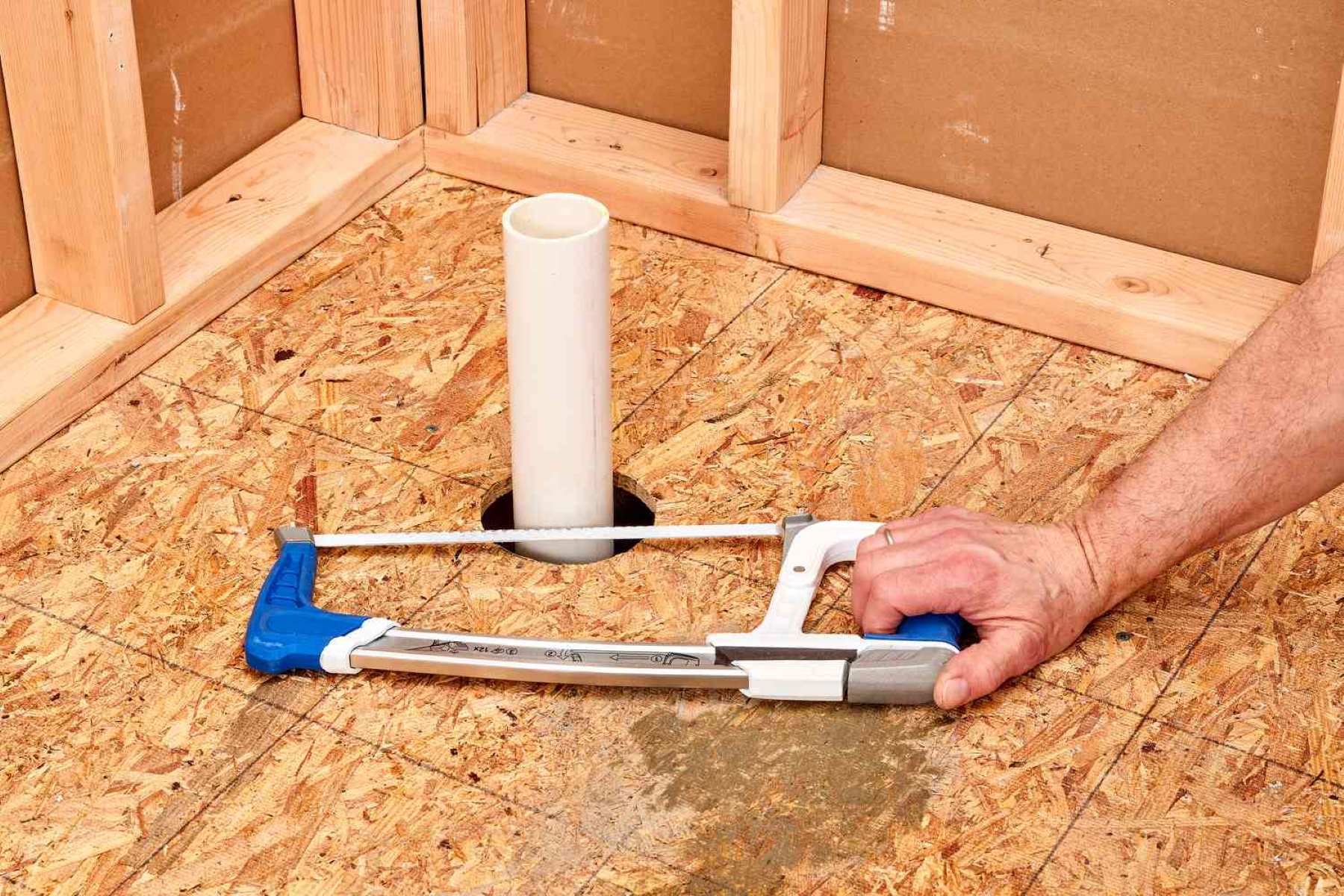Home>Automotive>How To Replace Power Steering Pump
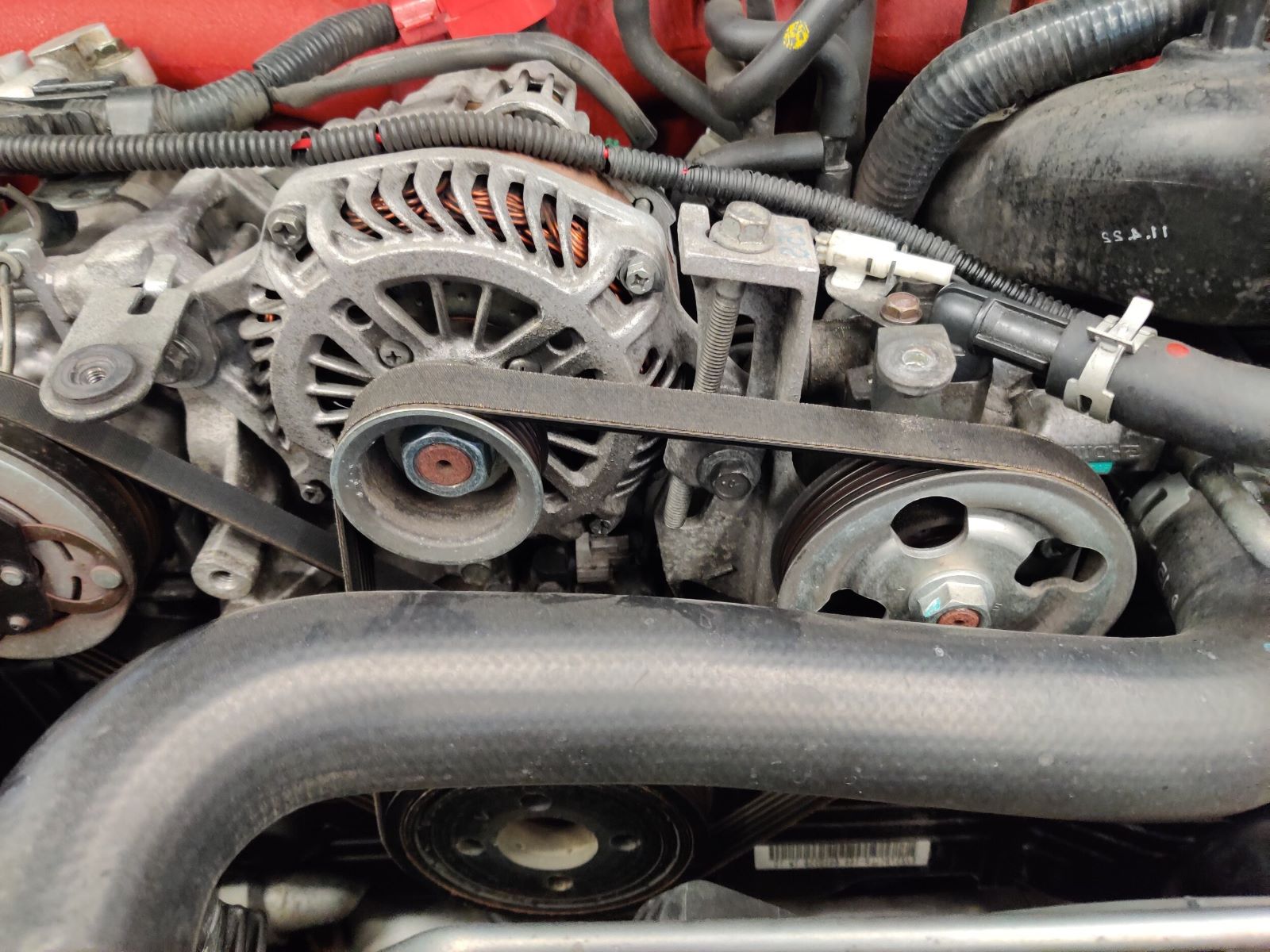

Automotive
How To Replace Power Steering Pump
Published: March 4, 2024
Learn how to replace a power steering pump in your automotive vehicle with our step-by-step guide. Save time and money by doing it yourself!
(Many of the links in this article redirect to a specific reviewed product. Your purchase of these products through affiliate links helps to generate commission for Regretless.com, at no extra cost. Learn more)
Table of Contents
Introduction
Replacing a power steering pump is a crucial maintenance task for ensuring smooth and responsive steering in your vehicle. Over time, the power steering pump can wear out, leading to symptoms such as difficulty turning the steering wheel, whining noises, or leaks. By understanding the process of replacing the power steering pump, you can save on costly repair bills and keep your vehicle performing at its best.
In this comprehensive guide, we will walk you through the step-by-step process of replacing a power steering pump. Whether you're a seasoned DIY enthusiast or a novice looking to tackle your first automotive project, this guide will equip you with the knowledge and confidence to successfully complete the task.
Before diving into the replacement process, it's essential to gather the necessary tools and materials. Having the right equipment at your disposal will streamline the process and ensure a successful outcome. Once you have everything you need, we'll guide you through locating the power steering pump in your vehicle and removing the old pump with precision and care.
After removing the old power steering pump, we'll move on to the exciting part – installing the new pump. This step requires attention to detail and a methodical approach to ensure proper fitment and functionality. Once the new pump is in place, we'll cover the crucial task of refilling the power steering fluid to the correct level, ensuring optimal performance and longevity of the new pump.
Finally, we'll guide you through testing the new power steering pump to verify that it operates smoothly and without any issues. This step is essential for identifying and addressing any potential issues before hitting the road, providing peace of mind and confidence in your vehicle's steering system.
By following this guide, you'll not only save on repair costs but also gain a sense of accomplishment and empowerment from successfully completing a significant automotive maintenance task. So, let's roll up our sleeves and dive into the process of replacing a power steering pump, empowering you to keep your vehicle running smoothly and safely.
Read more: How To Check Power Steering Fluid
Step 1: Gather Necessary Tools and Materials
Before embarking on the task of replacing a power steering pump, it's essential to gather the necessary tools and materials to ensure a smooth and efficient process. Having the right equipment at your disposal will not only streamline the task but also minimize the risk of complications during the replacement. Here's a comprehensive list of tools and materials you'll need for this project:
Tools:
- Socket Set and Ratchet: A quality socket set with a ratchet will be essential for removing bolts and fasteners securing the power steering pump.
- Wrench Set: A set of wrenches in various sizes will aid in accessing and loosening components during the replacement process.
- Pliers: Both regular and needle-nose pliers will be useful for manipulating and securing hose clamps and other small components.
- Power Steering Pulley Puller/Installer Kit: This specialized tool is crucial for removing and installing the power steering pump pulley without causing damage.
- Fluid Catch Pan: A catch pan will help contain any spilled power steering fluid during the replacement process, preventing mess and environmental contamination.
- Torque Wrench: A torque wrench is necessary for accurately tightening bolts and fasteners to the manufacturer's specifications, ensuring proper fitment and safety.
- Jack and Jack Stands: These are essential for safely raising and supporting the vehicle, providing adequate clearance to access the power steering pump.
Materials:
- New Power Steering Pump: Ensure that the replacement pump is compatible with your vehicle's make, model, and year to guarantee a proper fit and functionality.
- Power Steering Fluid: It's crucial to use the recommended type of power steering fluid specified by the vehicle manufacturer to maintain optimal performance and prevent damage to the new pump.
- Replacement O-rings and Gaskets: Depending on the specific design of your vehicle's power steering system, you may need new O-rings and gaskets to ensure a proper seal and prevent leaks.
- Threadlocker: A high-quality threadlocker will help secure bolts and fasteners, preventing them from loosening due to vibration and ensuring long-term reliability.
By ensuring that you have all the necessary tools and materials on hand, you'll be well-prepared to tackle the power steering pump replacement with confidence and precision. This proactive approach will contribute to a successful and satisfying automotive maintenance experience, allowing you to maintain your vehicle's steering system in top condition.
Step 2: Locate the Power Steering Pump
Locating the power steering pump in your vehicle is a crucial initial step in the replacement process. The power steering pump is typically driven by a belt connected to the engine and is responsible for pressurizing the power steering fluid, which assists in steering the vehicle with minimal effort from the driver. Here's a detailed guide to help you locate the power steering pump:
-
Consult the Owner's Manual: If you're unsure about the exact location of the power steering pump in your vehicle, referring to the owner's manual can provide valuable insights. The manual often contains detailed diagrams and descriptions of the engine compartment, including the location of major components such as the power steering pump.
-
Identify the Serpentine Belt: The power steering pump is usually connected to the engine via a serpentine belt, which also drives other components such as the alternator and air conditioning compressor. By locating the serpentine belt, you can trace its path to identify the power steering pump, which is typically driven by the belt's rotation.
-
Locate the Reservoir: In many vehicles, the power steering pump is accompanied by a fluid reservoir, which stores the power steering fluid. By identifying the power steering fluid reservoir, you can trace the connected hoses to locate the power steering pump, which is often positioned nearby for convenient fluid circulation.
-
Visual Inspection: Once you have a general idea of the power steering pump's location based on the serpentine belt and fluid reservoir, visually inspect the engine compartment for a component with pulleys and hoses. The power steering pump is often recognizable by its pulley, which is driven by the serpentine belt, and the attached hoses for fluid circulation.
-
Refer to Online Resources: If you encounter challenges in locating the power steering pump, various online forums, and automotive websites can provide specific guidance for your vehicle's make and model. Community forums and instructional videos may offer visual references and tips for identifying the power steering pump in your particular vehicle.
By following these steps and utilizing available resources, you can confidently locate the power steering pump in your vehicle. This foundational knowledge will pave the way for the subsequent steps of removing the old pump and installing the new one, ensuring a seamless and successful replacement process.
Step 3: Remove the Old Power Steering Pump
Removing the old power steering pump is a critical phase in the replacement process, requiring precision and attention to detail. Before initiating the removal, it's essential to ensure the vehicle is safely supported on jack stands, providing ample clearance to access the power steering pump. Here's a detailed guide to help you navigate through the removal process:
-
Disconnect the Power Steering Lines: Begin by carefully disconnecting the power steering lines from the pump. It's advisable to place a catch pan beneath the pump to contain any residual power steering fluid that may drain out during this step. Use appropriate wrenches to loosen the fittings and gently remove the lines, taking care to prevent damage to the fittings and hoses.
-
Remove the Mounting Bolts: The power steering pump is secured to the engine or mounting bracket with bolts. Using a socket set and ratchet, carefully remove the mounting bolts while ensuring that the pump is adequately supported to prevent it from falling once the bolts are removed. It's crucial to keep track of the specific bolts and their respective locations to facilitate the reinstallation of the new pump.
-
Detach the Pulley: In some cases, the power steering pump pulley may need to be transferred to the new pump. If this is the case, a power steering pulley puller/installer kit will be necessary to safely remove the pulley from the old pump. Follow the manufacturer's instructions for using the pulley puller, ensuring that the pulley is removed without causing damage to the pump or pulley.
-
Carefully Extract the Pump: With the power steering lines and mounting bolts removed, carefully extract the old power steering pump from its location. It's important to maneuver the pump out of the engine compartment with caution, taking care not to damage surrounding components or cause any spills that could lead to contamination.
By following these steps with precision and care, you can successfully remove the old power steering pump, paving the way for the subsequent installation of the new pump. This phase sets the stage for rejuvenating the vehicle's steering system, ensuring optimal performance and safety on the road.
Step 4: Install the New Power Steering Pump
With the old power steering pump successfully removed, the installation of the new pump marks a pivotal phase in the replacement process. This step demands meticulous attention to detail and precision to ensure the seamless integration of the new component into the vehicle's steering system. Here's a comprehensive guide to assist you in installing the new power steering pump:
-
Prepare the New Pump: Before installing the new power steering pump, it's essential to inspect the component for any shipping or manufacturing residues. Thoroughly clean the pump to ensure that it is free from contaminants that could compromise its performance. Additionally, verify that the replacement pump includes any necessary O-rings or gaskets required for sealing connections and preventing fluid leaks.
-
Position the New Pump: Carefully maneuver the new power steering pump into the designated location within the engine compartment. Take care to align the pump with the mounting points and ensure that it sits securely in place before proceeding with the installation.
-
Secure the Mounting Bolts: Using the appropriate socket set and torque wrench, reattach the mounting bolts to secure the new power steering pump to the engine or mounting bracket. It's crucial to tighten the bolts to the manufacturer's specified torque settings, ensuring a secure and stable fitment of the pump.
-
Attach the Power Steering Lines: Reconnect the power steering lines to the new pump, ensuring that the fittings are tightened to the appropriate torque specifications. Exercise caution to prevent cross-threading or overtightening, which could lead to leaks or damage to the fittings.
-
Install the Power Steering Pump Pulley: If the power steering pump pulley was removed from the old pump, utilize the power steering pulley puller/installer kit to safely transfer the pulley to the new pump. Follow the manufacturer's instructions for securely installing the pulley, ensuring that it is aligned and seated correctly on the pump shaft.
-
Double-Check Connections and Alignment: Before proceeding to the next phase, carefully inspect the installed pump, ensuring that all connections are secure, and the pump is aligned correctly. This step is crucial for preventing potential issues and ensuring the proper functioning of the power steering system.
By following these detailed steps and exercising precision throughout the installation process, you can successfully integrate the new power steering pump into your vehicle's steering system. This phase sets the stage for refilling the power steering fluid and testing the new pump, ultimately contributing to the restoration of smooth and responsive steering performance in your vehicle.
Step 5: Refill Power Steering Fluid
Refilling the power steering fluid is a crucial step in the power steering pump replacement process, ensuring proper lubrication and hydraulic assistance for the steering system. Here's a detailed guide to help you navigate through the power steering fluid refilling process:
-
Locate the Power Steering Fluid Reservoir: Begin by locating the power steering fluid reservoir in the engine compartment. The reservoir is typically a translucent or opaque plastic container with a cap that is labeled with the power steering fluid symbol. Consult the vehicle's owner's manual if you encounter difficulty in identifying the reservoir.
-
Inspect the Fluid Level: Before adding new power steering fluid, inspect the current fluid level in the reservoir. The fluid level should fall within the designated range indicated on the reservoir, ensuring that it neither exceeds the maximum level nor falls below the minimum level. If the fluid level is low, it may indicate a pre-existing issue with the power steering system that should be addressed before proceeding.
-
Select the Correct Power Steering Fluid: It's essential to use the type of power steering fluid recommended by the vehicle manufacturer. Consult the owner's manual or the specifications provided by the replacement pump manufacturer to identify the appropriate type of power steering fluid. Using the wrong type of fluid can lead to performance issues and potential damage to the new pump.
-
Add the New Power Steering Fluid: Carefully remove the cap from the power steering fluid reservoir and add the new fluid using a funnel to prevent spills and contamination. Pour the fluid gradually, periodically checking the fluid level to ensure that it aligns with the recommended range. Exercise caution to avoid overfilling the reservoir, as this can lead to foaming and potential system malfunctions.
-
Bleed the Power Steering System (If Necessary): In some cases, air may become trapped in the power steering system during the pump replacement process. To remove air bubbles and ensure proper hydraulic function, the power steering system may need to be bled. This involves turning the steering wheel from lock to lock while the engine is running, allowing any trapped air to escape from the system.
-
Inspect for Leaks and Abnormal Noises: After refilling the power steering fluid and bleeding the system if necessary, visually inspect the connections and components for any signs of leaks. Additionally, start the engine and turn the steering wheel from lock to lock, listening for any abnormal noises or experiencing any unusual resistance. These checks help identify potential issues that may require further attention.
By meticulously following these steps and adhering to the manufacturer's recommendations, you can effectively refill the power steering fluid, ensuring optimal lubrication and hydraulic assistance for your vehicle's steering system. This phase sets the stage for testing the new power steering pump, ultimately contributing to the restoration of smooth and responsive steering performance in your vehicle.
Step 6: Test the New Power Steering Pump
Testing the new power steering pump is a critical phase in the replacement process, allowing you to verify its functionality and address any potential issues before returning the vehicle to regular operation. A comprehensive testing procedure ensures that the steering system operates smoothly and responsively, providing confidence in the newly installed component. Here's a detailed guide to help you navigate through the testing phase:
-
Start the Engine: Begin by starting the vehicle's engine and allowing it to idle. As the engine runs, the power steering pump will circulate the newly added fluid, priming the system for testing.
-
Steering Wheel Movement: With the engine running, turn the steering wheel from lock to lock, observing the responsiveness and smoothness of the steering action. Pay attention to any unusual resistance, noises, or vibrations, as these may indicate potential issues with the new pump or the power steering system.
-
Check for Fluid Leaks: While the engine is running and the steering wheel is being turned, visually inspect the power steering pump and its connections for any signs of fluid leaks. Leaks can manifest as dripping or seepage around fittings, hoses, or the pump itself. Address any leaks promptly to prevent fluid loss and system contamination.
-
Listen for Abnormal Noises: As the steering wheel is turned, listen for any abnormal noises emanating from the power steering pump or the steering system. Unusual whining, groaning, or grinding noises may indicate air in the system, insufficient fluid, or issues with the pump's operation.
-
Road Test: If the initial checks reveal no issues, take the vehicle for a brief road test to further evaluate the steering system's performance. Pay attention to the steering response at various speeds and during maneuvers, ensuring that the steering feels precise and effortless.
-
Recheck Fluid Level: After the road test, park the vehicle on a level surface and allow the engine to idle. Revisit the power steering fluid reservoir and verify that the fluid level remains within the recommended range. If necessary, top up the fluid to maintain the proper level.
By meticulously conducting these tests and observations, you can effectively evaluate the functionality of the new power steering pump, ensuring that it operates smoothly and enhances the vehicle's steering performance. Addressing any identified issues promptly will contribute to the long-term reliability and safety of the power steering system, providing peace of mind and confidence in your vehicle's steering capabilities.
Read more: How To Replace A License Plate Light
Conclusion
In conclusion, successfully replacing a power steering pump is a rewarding accomplishment that not only saves on repair costs but also contributes to the overall performance and safety of your vehicle. By following the comprehensive steps outlined in this guide, you have gained valuable insights into the intricacies of power steering pump replacement, empowering you to tackle this essential automotive maintenance task with confidence and precision.
Throughout the process, you have learned the importance of gathering the necessary tools and materials, ensuring that you are well-equipped to navigate the replacement process efficiently. From locating the power steering pump to removing the old pump with care and installing the new pump with precision, you have demonstrated a proactive and methodical approach to maintaining your vehicle's steering system.
Refilling the power steering fluid and testing the new pump were pivotal steps that underscored the significance of meticulous attention to detail. By adhering to manufacturer specifications and conducting thorough testing procedures, you have ensured that the new power steering pump integrates seamlessly into the steering system, providing smooth and responsive steering performance.
As you reflect on the journey of replacing the power steering pump, it's important to acknowledge the sense of accomplishment that comes with successfully completing a significant automotive maintenance task. Your proactive approach to vehicle maintenance not only enhances your automotive knowledge but also instills a sense of empowerment and self-reliance in caring for your vehicle.
Moving forward, the knowledge and skills you have acquired through this process will serve you well in maintaining the optimal performance and safety of your vehicle. Whether you're a seasoned DIY enthusiast or a novice looking to expand your automotive maintenance capabilities, the successful replacement of a power steering pump exemplifies the tangible benefits of taking a hands-on approach to vehicle care.
By embracing the principles of proactive maintenance and precision in automotive tasks, you are well-positioned to navigate future maintenance and repair endeavors with confidence and expertise. As you embark on your automotive maintenance journey, may the knowledge and skills gained from this power steering pump replacement guide continue to empower you in keeping your vehicle running smoothly and safely for years to come.

